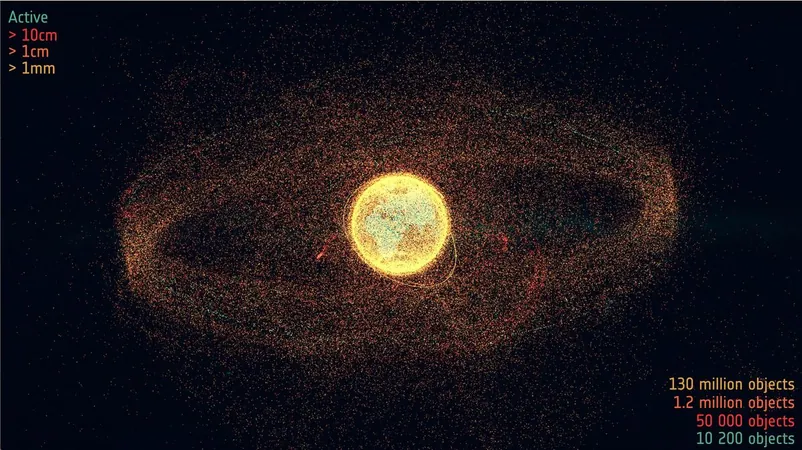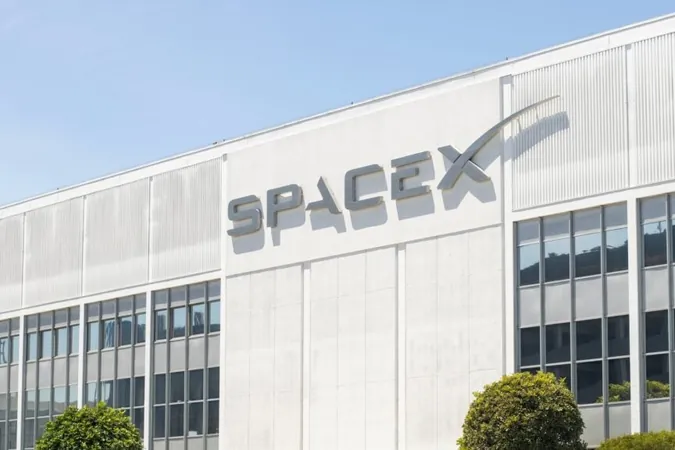
Space Junk: Three Satellite Crashes Daily with No End in Sight!
2025-04-14
Author: Sarah
Three Satellite Crashes a Day: A Growing Concern
A startling new report from the European Space Agency (ESA) reveals that at least three aging satellites or rocket remnants crash into Earth every single day. As astonishing as this statistic is, experts are warning that the situation is only going to worsen!
The Alarming Rise of Space Debris
In total, an estimated 1,200 objects will have reentered our atmosphere by 2024, plus countless smaller debris fragments. With approximately 45,700 larger pieces of space junk currently orbiting our planet, the problem is escalating rapidly. Many of these new additions to the junkyard include defunct satellites that have completed their missions.
A Dirty Sky: Orbital Collisions Fueling the Crisis
In addition to the natural degradation of satellites, several orbital collisions and explosions have unleashed an additional 3,000 trackable debris fragments in the last year alone. With around 9,300 active spacecraft orbiting Earth, continuous launches are compounding the problem!
Experts Sound the Alarm
Jonathan McDowell, a leading astrophysicist, states that the growing frequency of these space objects' reentries is an environmental concern. On April 4, he observed at least three objects crashing back to Earth, including two SpaceX Starlink satellites and a vintage Russian spy satellite named Kosmos 1340. Starlink satellites, already a major contributor to the falling debris, are only expected to increase in number.
Is a Satellite Crash Inevitable?
McDowell notes that if SpaceX proceeds with plans to expand its Starlink constellation to a whopping 30,000 satellites, we could soon see an average of 15 reentries every day! With major players like Amazon and China entering the satellite race, the future looks even grimmer. Every five years, older satellites are typically replaced, leading to more junk if not promptly deorbited.
A Threat to the Environment
The increasing number of reentries also poses serious concerns for the atmosphere. As these satellites mostly consist of aluminum, burning them releases aluminum oxide, a substance that may contribute to ozone depletion and disturb thermal balances in the upper atmosphere. Eloise Marais, an atmospheric chemistry professor, describes this trend as "uncharted territory" and fears that harmful pollutants are being introduced at unprecedented levels.
The Risks of Falling Space Junk
While the odds of a satellite causing harm are low due to Earth's vast oceans and unpopulated areas, there have been close calls. For instance, pieces of a SpaceX rocket were found scattered in Poland and Ukraine earlier this year. In a separate incident, a shard of debris crashed through a Florida home’s roof!
Are We Playing with Fire?
McDowell warns, "We’re rolling the dice every time a piece of space junk reenters. Eventually, luck will run out, and someone could get hurt." The ESA emphasizes that even with efforts to remove old satellites, the total number of debris will continue to grow unless drastic measures are taken.



 Brasil (PT)
Brasil (PT)
 Canada (EN)
Canada (EN)
 Chile (ES)
Chile (ES)
 Česko (CS)
Česko (CS)
 대한민국 (KO)
대한민국 (KO)
 España (ES)
España (ES)
 France (FR)
France (FR)
 Hong Kong (EN)
Hong Kong (EN)
 Italia (IT)
Italia (IT)
 日本 (JA)
日本 (JA)
 Magyarország (HU)
Magyarország (HU)
 Norge (NO)
Norge (NO)
 Polska (PL)
Polska (PL)
 Schweiz (DE)
Schweiz (DE)
 Singapore (EN)
Singapore (EN)
 Sverige (SV)
Sverige (SV)
 Suomi (FI)
Suomi (FI)
 Türkiye (TR)
Türkiye (TR)
 الإمارات العربية المتحدة (AR)
الإمارات العربية المتحدة (AR)